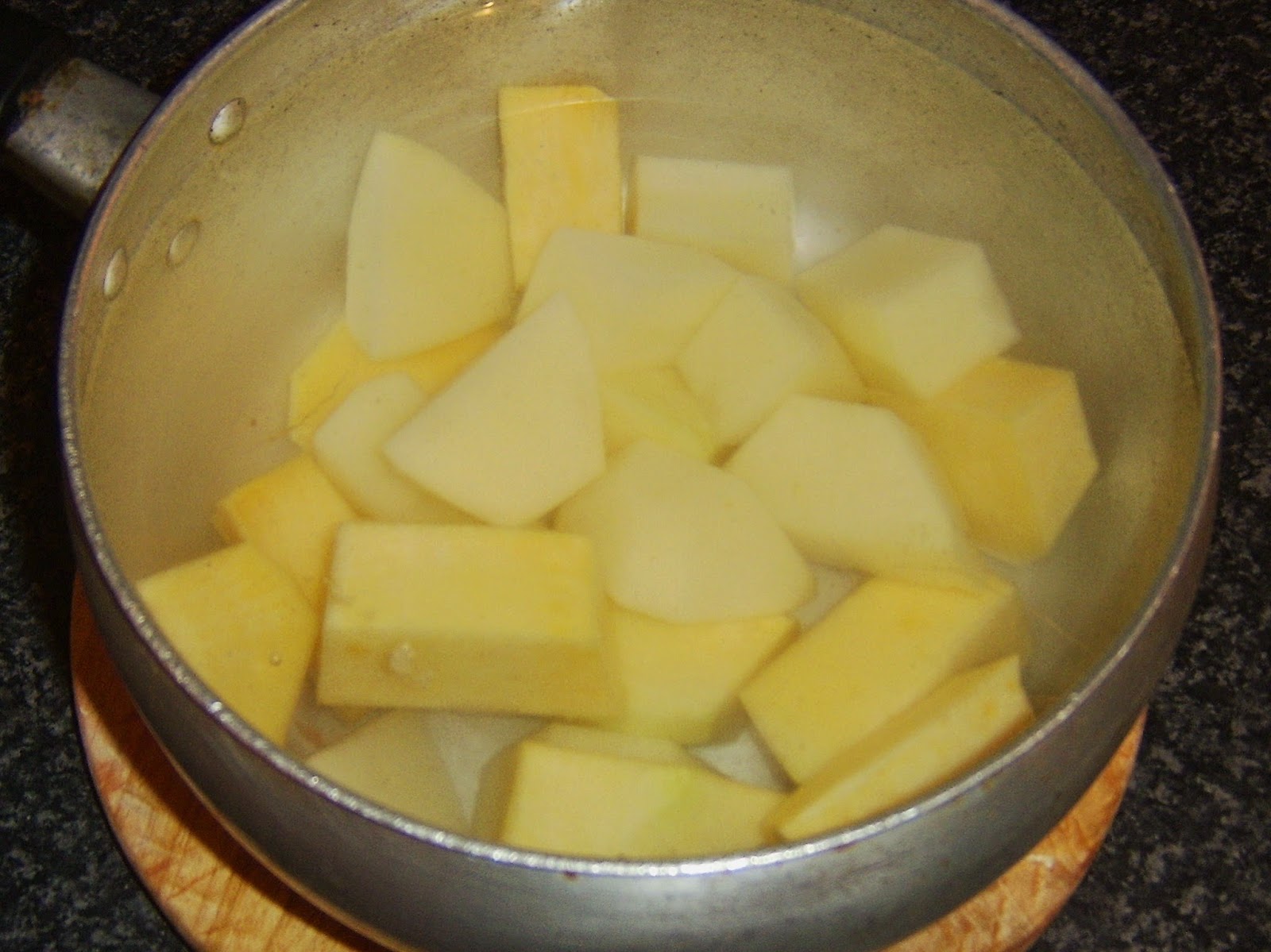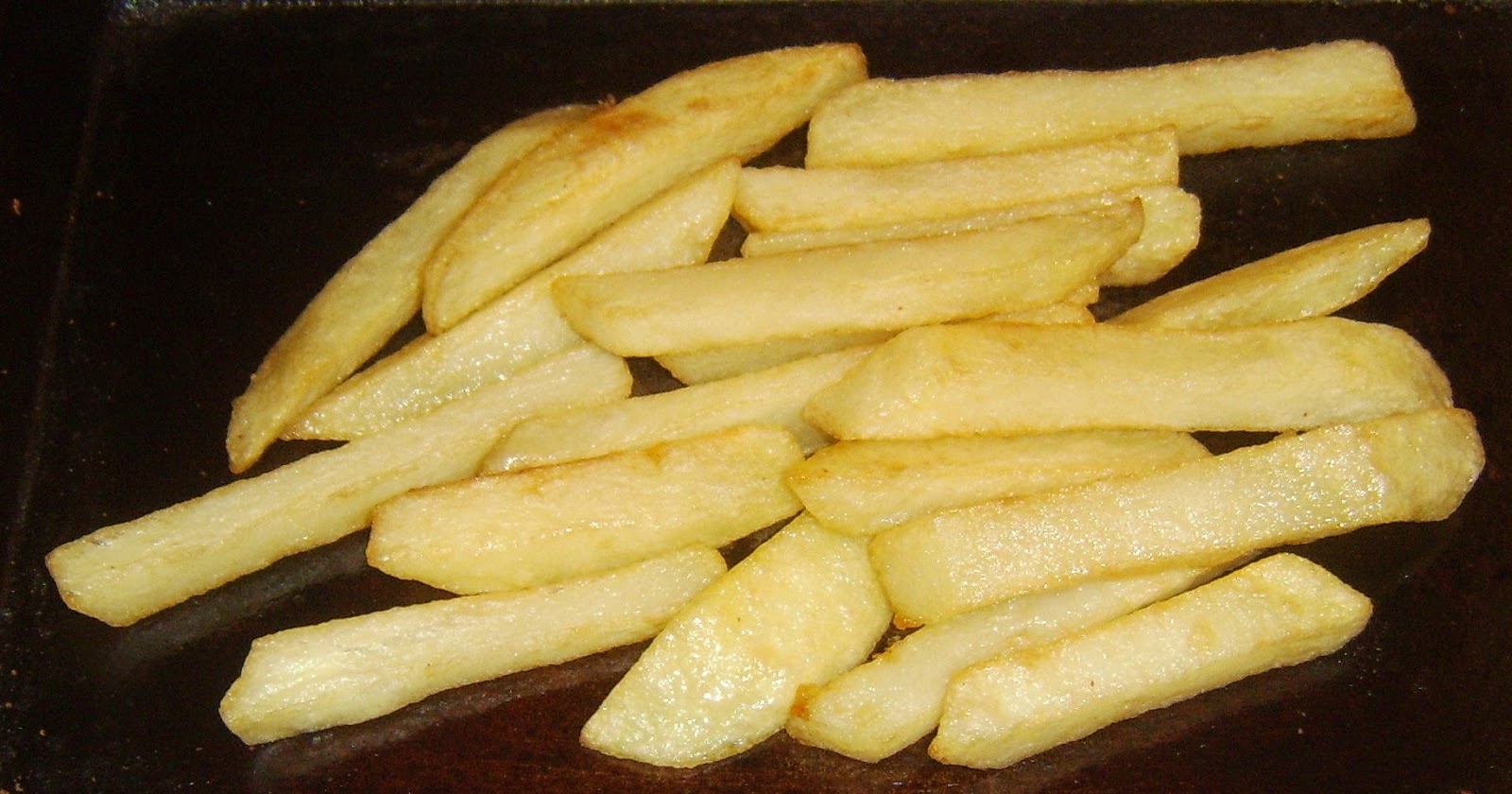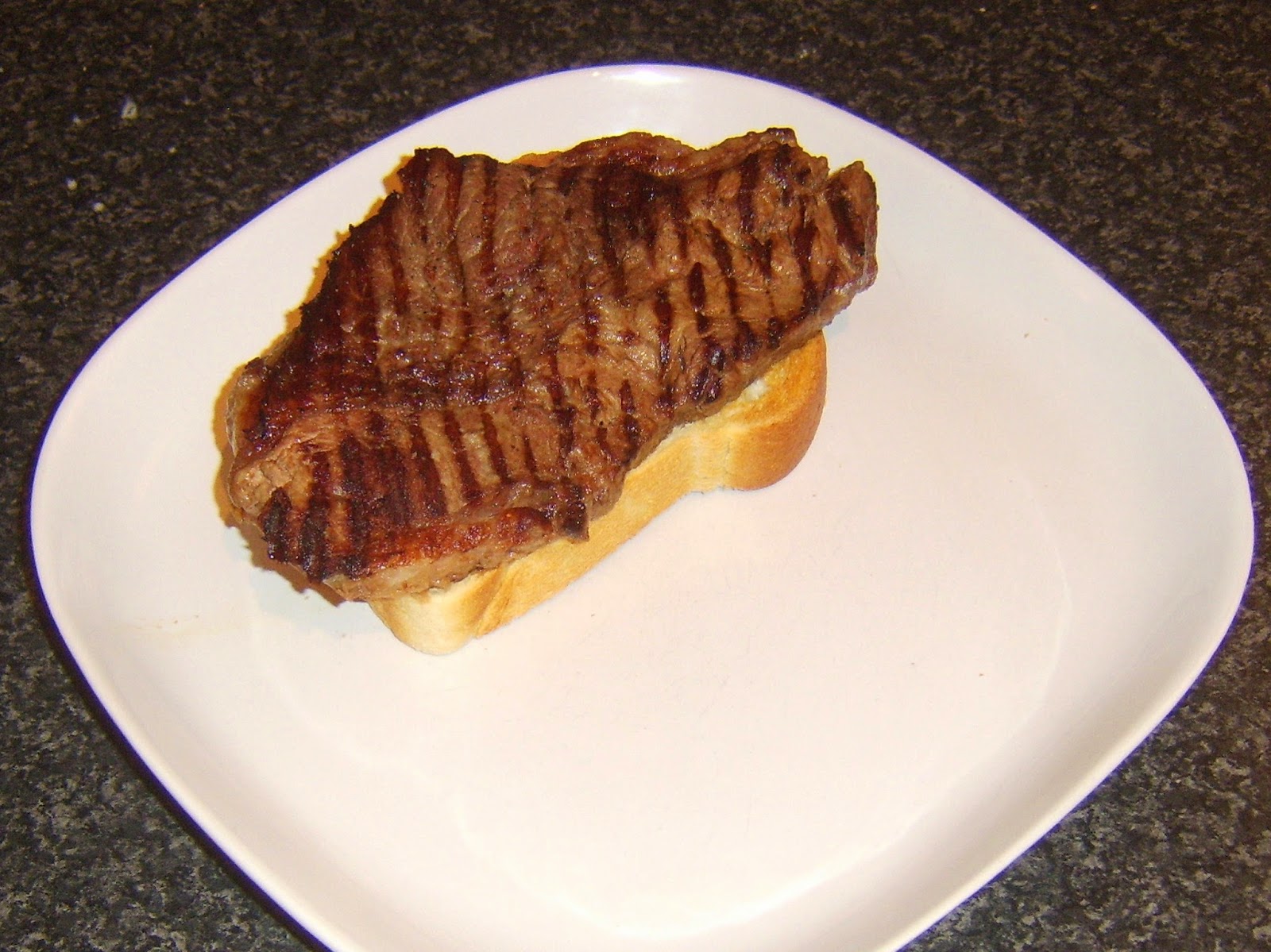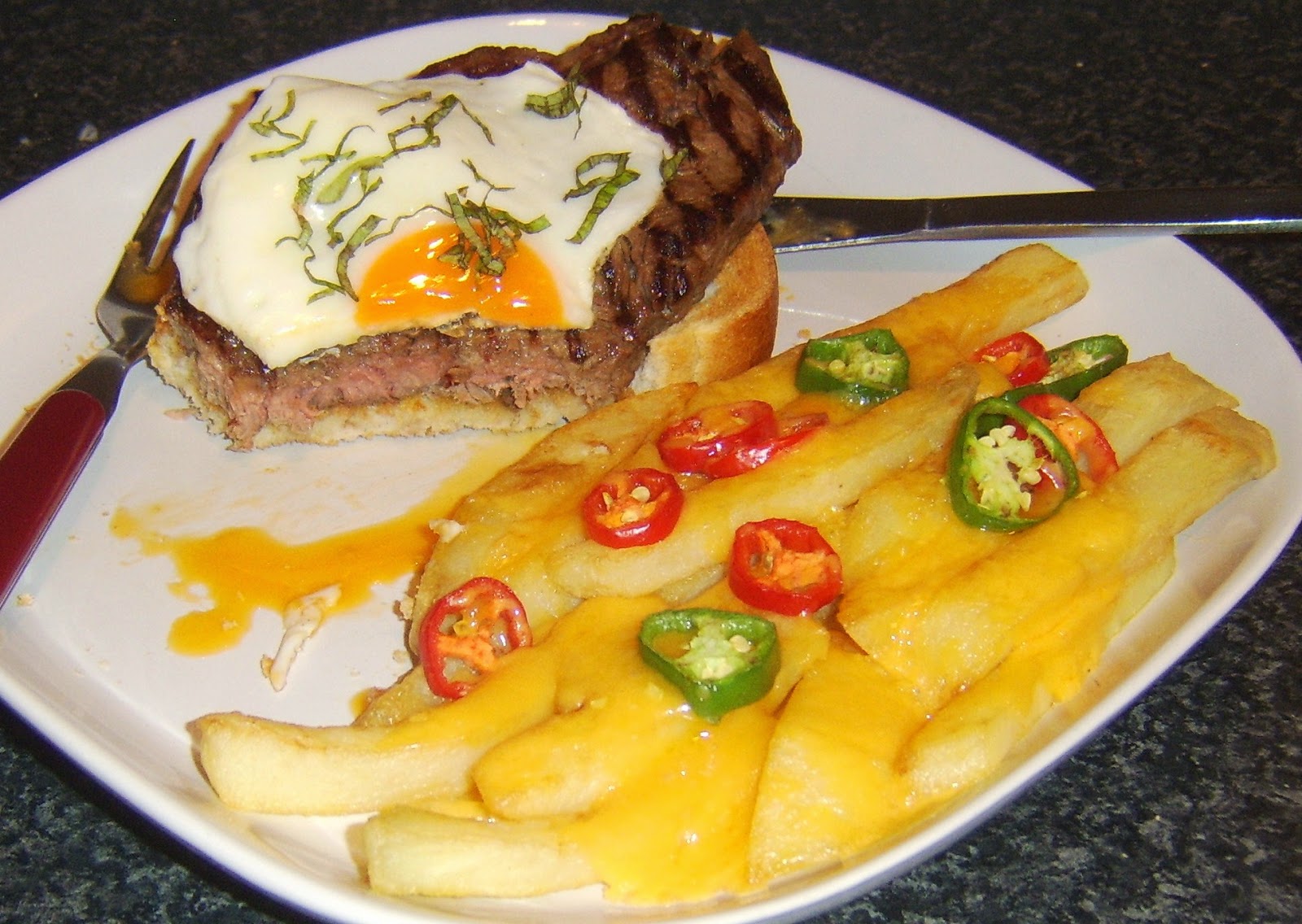 |
| Haggis is served with a selection of five different seasonal vegetables |
How do you like to serve your haggis? With the traditional tatties and neeps, perhaps combined with butter, chives and white pepper to form clapshot? No doubt both a tasty and traditional method but this recipe takes the idea a little bit further and while clapshot is served with the haggis, so too are an array of other Scottish seasonal vegetables to make up the five a day nutritional recommendations all on the one plate.
Fancy giving this idea a try this St Andrew's Night, or maybe on Burns' Night 2015? I should point out only that I prepared this meal as a dinner for one (myself) but hungry as I was, that proved overly ambitious. You could easily serve this dish as a sharing platter for two.
 |
| Scottish winter vegetables |
Ingredients
1 single portion haggis (circa half a pound/227g)
1/2 medium Swede turnip (rutabaga)
2 medium baking potatoes
1 large parsnip
2 medium carrots
10 to 12 Brussels sprouts
Salt
2 ounces/50g approximately of butter
White pepper
1 tablespoon freshly chopped chives
2 teaspoons freshly chopped coriander (cilantro)
2 teaspoons Scotch whisky marmalade
Generous pinch grated nutmeg
 |
| Individual portion haggis |
Directions
When you buy a haggis of whatever size, it will almost certainly be already cooked and merely require reheating. There are several ways in which this can be achieved and you are better following the advice on the pack or that of your butcher when the haggis is purchased fresh. The way I like to reheat it though is by wrapping it in foil, adding it to some cold water and bringing the water up to the gentlest of simmers. A small haggis like this will need to simmer for about twenty-five to thirty minutes.
 |
| Haggis ready to be very gently heated |
The potatoes and turnip should be peeled and chopped to circa one inch pieces. They go in to a pot with plenty of cold water. The water is then brought to a simmer for circa twenty minutes until the vegetables are just softened.
 |
| Tatties and neeps ready for boiling |
You will notice that I haven't peeled the carrots or parsnip. I simply scrubbed them thoroughly, topped and tailed them and roughly chopped. The skins contain vitamins and afford texture to the meal. Unless I am mashing them or the skins are particularly grubby, this is how I generally prepare carrots and parsnips.
Like the potatoes and turnip, the parsnips and carrot are chopped, added to salted cold water and brought to a simmer for fifteen to twenty minutes.
 |
| Parsnip and carrots ready for boiling |
The sprouts are the odd ones out in this meal. I always follow the old fashioned rule about cooking vegetables which states vegetables growing under the ground should be added to initially cold water, while those that grow above the ground are added to boiling water. The sprouts were therefore added to a pot and salted before I added boiling water from a kettle, brought them back to a simmer and simmered for seven or eight minutes until just softened.
 |
| Brussels sprouts prepared for cooking |
It's worth pointing out that your kitchen is going to get pretty steam filled with this lot all cooking at the same time. Make sure you therefore have your extractor fan on, or a window open, to avoid excessive condensation.
When everything is just about ready, put your serving plate in to your oven at its lowest setting to preheat.
 |
| Haggis and vegetables gently simmering away |
Drain the potatoes and turnip first, through a colander at your sink. Return to the pot and let them steam off for a few minutes while you attend to the haggis. If you don't let them steam like this and lose their excess moisture, you will have soggy, gloopy mash/clapshot.
 |
| Haggis is unwrapped and carefully cut open |
Lift the haggis from its pot with a large slotted spoon to a small bowl or plate. Carefully unwrap the foil using oven gloves before cutting open the skin. Spoon the haggis in to the centre of the plate and return the plate to the oven.
 |
| Haggis forms the platter centrepiece |
Add some butter and white pepper to the potatoes and turnip. Mash with a hand masher.
 |
| Haggis and neeps are mashed with butter and white pepper |
Only when they have been mashed should the chives be added to the potatoes and turnip. If you add it beforehand, the chives will simply become caught up in your masher.
 |
| Chopped chives are added to mashed tatties and neeps |
Carrot and coriander is a very popular soup but the combination also works well on a plate in this way. When you have drained the carrots and parsnips, separate them between two pots (I used the pot that the haggis had been in for the carrots). Add a little butter and the coriander to the carrots and gently shake the pot to combine.
 |
| Butter and coriander is added to carrots |
Honey is a popular addition to parsnips so why not whisky marmalade? This marmalade is made by a family friend and is absolutely delicious. I tried this idea once a while back as an experiment and have used the idea many times since. Simply add the marmalade to the parsnips and swirl the pot to melt the marmalade.
 |
| Whisky marmalade is added to carrots |
Drain the sprouts and add the remaining butter, seasoning with the nutmeg.
 |
| Butter and nutmeg is added to Brussels sprouts |
The plated haggis can then be removed from the oven and the vegetables arranged as shown.
 |
| Haggis and assorted vegetable platter is ready to serve |






































